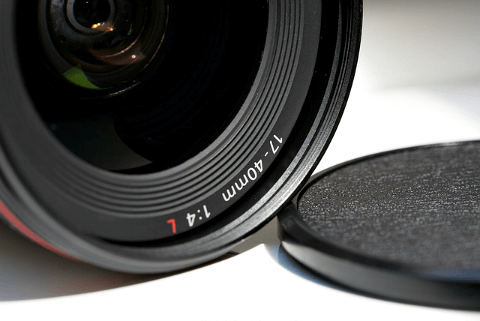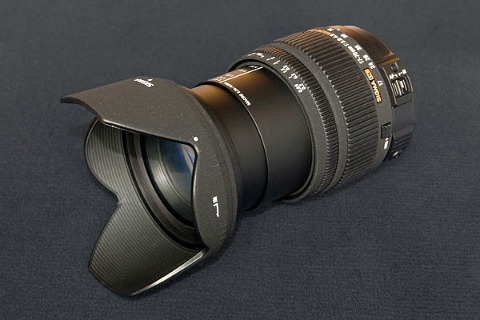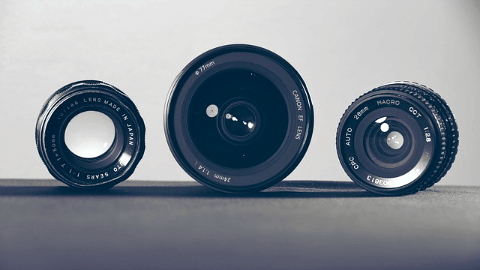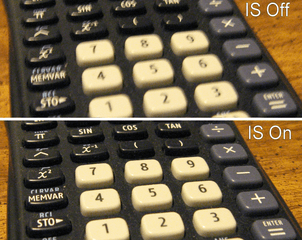How to choose a camera lens: The complete guide
After you settled on your camera, how to choose a camera lens would be your next question — or, rather, should. It may feel intimidating, but fear not. Use the following selection guide to assist you in your decision!

You may want to rotate your phone in order to improve your browsing experience on this site.
Quick links
- Camera lens manufacturers
- Choosing a focal length
- Deciding on maximum aperture
- Other camera lens features
Camera lens basics: What's in the name
Camera lenses tend to feature rather complex identification.
Something like Nikon AF-S Nikkor 16-35mm F4G ED VR. Or, Sony Carl Zeiss Distagon 2/24 T* ZA SSM.
Very impressive indeed. But what is it supposed to mean??
Bad news first: There are no rules! Manufacturers are free to name their own products. Their intention is, of course, to provide you with the information which will enable you to choose! You will agree, this information is well worth discovering.
Camera lens brands, formats, and mounts
Let's start with the obvious. No producer would miss mentioning themselves when naming their lenses. In the above examples, Nikon and Sony are camera lens manufacturers.
The next thing you would probably like to know, is whether a particular lens fits your camera. This is to understand literally: different brands use distinct and incompatible lens mounts, so it is physically impossible to attach, say, a Canon lens to a Nikon camera without an adaptor—or damaging both the lens and the body in the process, for that matter.
This tradition dates back to the time when camera models didn't get updated for years, and once bought, a camera was unlikely to be replaced very soon, if ever. (Yes, those were the days...) Hence, camera-makers relied heavily on selling accessories, and consequently made sure their customers wouldn't turn to the competition looking for them!
To make it a bit more complicated, producers with own mirrorless camera lines use different camera mounts for the latter as well.
But even for cameras and lenses with the same mount, compatibility isn't always a given. Several reasons may exist for this, main of them being different camera sensor sizes.
The standard full-frame format matches that of 35mm film cameras, and features sensors 36 x 24 mm large.
Ever wondered why 36 x 24 mm large frames get called 35mm format? The answer is rather surprising. 35mm film has stripes with sprocket holes on both sides of it, so 24mm become 35mm on the whole. It is not 1mm of width that gets lost, it's 11mm of height that get recovered!
Other camera sensors are usually smaller in size:
 Digital camera sensor size comparison
Digital camera sensor size comparisonMedium-format cameras have sensors – or use film – larger than full frame/35 mm.
Camera lenses specifically designed for smaller sensors, most commonly APS-C, should not be used on full-frame cameras. Doing this will produce a heavy darkening – also known as vignetting – in the corners of every image.
Lenses for APS-C-size sensors are clearly designated as such to prevent this sort of misuse.
On the other hand, full-frame lenses will work just fine – and sometimes even better – with APS-C sensors. Keep in mind though, that their field of view will be effectively cropped in this situation, due to the smaller projection surface. Refer to the discussion of the focal length below.
Another compatibility issue may arise from focusing abilities of the lens at hand. Some lenses rely on the attached camera body for power to move their internal motors. If the camera is unable to provide it over the lens mount, the lens won't autofocus.
The mount- and format-specific information for different camera builds is outlined in the following table:
Camera lens manufacturers and mount types
|
Manufacturer |
Mount |
APS-C |
Mirrorless |
Notes |
|
Canon |
EF |
EF-S |
EF-M |
APS-C cameras have a different mount and require an adaptor to use with EF lenses |
|
Fujifilm |
F |
X |
Fujifilm film SLRs had Nikon mount; | |
|
Leica |
M |
- |
SL | |
|
Nikon |
F |
DX |
1 |
Original Nikkor lenses are designated AF as in "autofocus" |
|
Olympus/ |
Four Thirds |
- |
Micro Four Thirds |
Olympus film SLRs used OM-mount; |
|
Pentax |
K |
DA |
Q | |
|
Samsung |
K |
NX |
Pentax K-mount on the short-lived SLR lenses run requires an adaptor for NX | |
|
Sigma |
SA |
DC |
DN |
The only lens-maker for Sigma cameras; also third-party manufacturer |
|
Sony |
A |
DT |
E |
Sony SLR cameras and lenses use Minolta mount |
|
Tamron |
EF, F, A, K |
Di II |
Di III |
Third-party manufacturer; full-frame lenses are designated Di |
|
Tokina |
EF, F, A |
DX |
MF |
Third-party manufacturer |
Camera lens basics: Focal length
The next bit of information contained in a lens description is the focal length. This is denoted in mm and used to describe the field of view of the lens in question. The shorter is the lens focal length the wider is its angle of view.
Since field of view is responsible for the area covered by an image, it is the focal length that defines the usual application of a specific lens.
You may have guessed that long lenses, i.e., those with a narrow field of view, are better suited for portraits, while short, or wide-angle lenses, are a great fit for landscapes.
Traditionally, and to make comparisons easier, the focal length relates to the 35-mm format, that is, 36 x 24 mm. On a medium with a different size, be it film or digital sensor, the same focal length produces a different field of view according to that medium's crop factor.
The APS-C format immensely popular with digital camera manufacturers is sized at roughly 24 x 16 mm, having 1.5 times smaller side dimensions than the full-frame format. 1.5 is thus a standard crop factor for APS-C cameras.
This means, a 24mm lens will have the field of view of a 36mm lens when used with an APS-C-sized sensor.
Canon APS-C sensors have a crop factor of 1.6. A 24mm lens will cover the same area as a 38mm lens when attached to a "smaller" Canon camera.
Four Thirds system lenses have a crop factor of 2—a 14mm lens is equivalent to 28mm on an Olympus camera.
Medium-format cameras have crop factors less than 1. Hasselblad XPan, my film camera, has a crop factor of around 0.55 when set to panoramic (65 x 24 mm frame). Its 45mm lens has a horizontal field of view similar to that of a 25mm lens.
This number is again the relation of two frame widths: 36 / 65 ≈ .55.
Camera lens types by focal length
|
Lens type |
Full-frame/ |
APS-C |
Typical applications |
|
Ultra wide-angle |
Less than 24mm |
Less than 16mm |
Architecture, interiors, big groups, landscapes |
|
Wide-angle |
24-35mm |
16-23mm |
Landscapes |
|
Standard |
35-70mm |
23-46mm |
Landscapes, street photography, reportage |
|
Telephoto |
70-300mm |
46-200mm |
Studio, portraits, fashion, advertisement |
|
Super telephoto |
Over 300mm |
Over 200mm |
Wildlife, celebrity (spy and candid) |
Prime vs. zoom lenses
Prime lenses are those with a single fixed focal length, as opposed to zoom lenses, which allow to choose the focal length – and field of view associated with it – at will from a predefined range.
Prime lenses tend to be smaller, lighter, and of higher quality. On the other hand, they somewhat limit your work pace. Unable to change the frame from your position, you are bound to actively search the best location for your image.
Bearing this in mind, I am still quite happy working with just two prime lenses, constantly moving around and looking for the best shooting spot, instead of staying put and zooming.
As I mentioned elsewhere, this is what they call "zooming with your feet".
Zoom lens designation
Zoom lens labels always include both extreme focal lengths of their range, e.g., 18-55mm for a ubiquitous APS-C DSLR kit lens, close to 28-85mm in full-frame format.
Other examples for full-frame zoom lenses:
- 16-35mm for a zoom lens covering the wide-angle range
- 24-85mm, from wide-angle to short telephoto, very popular during the film era
- 70-135mm, a short telephoto zoom ideal for portraits
- 100-300mm, a versatile telephoto zoom lens
Super-zooms of the one-size-fits-all kind, e.g., 18-200mm APS-C (28-300mm full-frame), may sound convenient, but rarely achieve high quality marks, neither for their optics nor mechanics.
 Sigma 17-70mm f/2.8-4.5 DC Macro HSM zoom lens
Sigma 17-70mm f/2.8-4.5 DC Macro HSM zoom lensCamera lens basics: Maximum aperture
Lens speed describes the lens ability to absorb light. This ability is derived from the lens aperture, or the relation between the size of the largest lens opening and the focal length.
The wider a lens can be opened in relation to its focal length, the larger is its maximum aperture, and the more light it can pass through to the medium inside the camera during the same exposure time.
Lenses with a larger aperture can afford shorter exposure times. That is why they are considered fast.
Fast lenses are more versatile, as they allow working in low-light conditions, at least in theory.
"In theory" means exactly that. Large apertures come with a narrow depth of field. Normally, this isn't very useful in landscape photography.
On the other hand, a larger aperture requires a bigger lens to accommodate a larger opening, hence, more optics and more weight.
This is especially true for long lenses. For example, a 300mm f/2 lens has to offer enough space for an opening of 150mm (6") — that's a lot.
Which apertures count as fast, is very much a technology issue. Some hundred years ago, lenses with the maximum aperture larger than f/6 were regarded as extremely fast. Nowadays, the fast bracket starts at f/2.8, while f/6.3 maximum is pretty lame indeed.
Aperture designation
Every lens will name its maximum aperture. However, there are at least four different notations for it. All of the following describe the same value:
- F4
- f/4
- 1:4
- 4
The Distagon lens mentioned in the beginning has the maximum aperture of 2 and the focal length of 24mm.
Sometimes, the minimum aperture gets named as well, like in Minolta AF 100-300 1:4 (32).
If a zoom lens has different maximum apertures on its focal range ends, which is not uncommon, both are named, e.g., Minolta AF 24-85 1:3.5-4.5.
The smaller is the significant number, i.e., 2, 3.5 or 4 in the examples above, the larger is the corresponding available aperture, and the faster is the lens.
 Fast lenses wide open: 50mm f/1.7, 24mm f/1.4, and 28mm f/2.8
Fast lenses wide open: 50mm f/1.7, 24mm f/1.4, and 28mm f/2.8Could you tell which is which without looking at the labels?
Camera lens basics: Other features
Many lens labels also carry additional information regarding their optical, mechanical, and just any other characteristics.
Focusing ability
This is probably a no-brainer in this day and age, but there was a time when not all cameras nor lenses were able to autofocus.
First autofocus SLR cameras appeared on the market in the early 1980s.
Manual focus lenses are still around, though not in the majority anymore. Regardless, there may be compatibility issues with some camera body and lens combinations. The reasons can relate to the presence of an internal motor, or the lack thereof in either builds.
These motors, or drives, used in lenses utilise varied technologies and produce different noise levels. Ultrasonic motors are most silent, but every lens-maker seem to have their own custom label for the species—refer to the table below.
Also, in line with the heading, lenses with internal focusing don't change their length when they, well, focus. This often gets notion in their labels, as IF, or [IF] on Fujifilm and Tamron lenses.
Image stabilisation
When activated, this feature counteracts camera vibration caused by long exposure times, at the cost of slight image softness.
Some manufacturers, like Pentax and Olympus, provide their camera bodies with the anti-shake technology, while most others build it into some of their lenses. Sony utilise the first option for their SLR range, and follow the latter path with their mirrorless cameras, including full-frame α7 series.
As a rule of thumb, to calculate the longest "safe" shutter speed for a given focal length F, just substitute its value in mm in 1/F. The result will be in seconds.
For example, wide-angle lenses should remain sharp at shutter speeds up to 1/30 seconds.
Can you verify it?
Image stabilisation can allow for 2-3 EV stops above this without significant quality loss, that is, exposure times of 1/8-1/4 seconds in the example. This is a dramatic improvement not to be ignored when looking for a new lens.
 Effect of image stabilisation on sharpness
Effect of image stabilisation on sharpnessThe following table lists some additional features to consider when choosing a camera lens.
|
Manufacturer |
Image stabilisation |
Silent drive |
High quality/Pro line |
|
Canon |
IS |
USM |
L |
|
Fujifilm |
OIS |
LM | |
|
Nikon |
VR |
AF-S | |
|
Olympus |
O.I.S. |
SWD |
Top Pro (not designated) |
|
Pentax |
(built in camera) |
SDM |
*, Limited |
|
Sigma |
OS |
HSM |
A, Art, EX |
|
Sony |
OSS (for E-mount) |
SSM |
G, GM |
|
Tamron |
VC |
USD |
SP |
|
Tokina |
VCM |
AT-X Pro |
In addition, lenses get designated for weather resistance (WR, on Fujifilm and Pentax camera lenses), aspherical optics, special coating, etc. Macro lenses usually disclose just as much ("Macro"), only Nikon call them "Micro" instead.
Macro lenses are capable of rendering the photographed scene at its actual or larger size (not exactly suited for landscapes). Sometimes the term is also used for lenses able to focus from a very close distance.
So, what's in the name?
Now you should be able to describe both lenses from the beginning of the page. Dare to try? The answers are in the aside below.
- Nikon AF-S Nikkor 16-35mm F4G ED VR
- Sony Carl Zeiss Distagon 2/24 T* ZA SSM
Answers
- Nikon original full-frame zoom lens, 16-35mm, maximum aperture f/4 throughout the range, with low dispersion optics, image stabilisation, and a silent drive. G is for "gelded": the lens doesn't have an aperture ring, and its aperture can only be set by the camera.
- Carl Zeiss/Sony prime 24mm f/2 lens with an ultrasonic motor. T* stands for anti-reflective coating of optic elements. "Distagon" relates to a specific wide-angle lens build proprietory to Zeiss. The lens is actually produced by Sony to Zeiss specifications.
How well did you do?
Tags: #cameralens #photocameras #photogear
Other landscape photography equipment
- Cameras best suited for landscape photography
- Following the thread about what is most important for landscape photography equipment, let's discuss some worthwhile options.
- Landscape photography ♥ panoramic cameras
- Ever wanted to try one? Read about your current options!
- How to choose a camera lens
- Everything you need to know when looking for a new camera lens, in one place: manufacturers, mounts, formats, types, and how to understand all those mystic lens labels.
- Understanding digital camera lenses – and their reviews
- Understand how to tell good digital camera lenses from the rest when reading their reviews.
- Best camera lenses for landscape photography
- The last article on camera lenses presents some fine choices for selected cameras.
- Filters for landscape photography
- Learn how to use most useful landscape photography filters!
- Polarising filter
- One of the most striking photography filters available is hard to imitate and easy to master. Try it!
Tell me what you think!
Is it useful 👍? Awful 👎? Leave a message! Your comments help make this site better (and give me a kick—one way or another).
Popular articles
-
A kind of magic
If a digital picture has to be seen in the real world, printed on a real medium and displayed in a real showcase, its transition from RAW to real is better done in an old school image editor. Enter A…
-
A duck for a dog
If you got your own place on the Internet, helping your visitors find what they are looking for is a great way to engage them and keep them staying a bit longer. A custom site search can achieve just …
-
"Might as well have the best"
Aiming for better images? Think better lenses! This is your most important piece of gear, so you better get it sorted out. — Need some advice?
 Become a patron for
Become a patron for